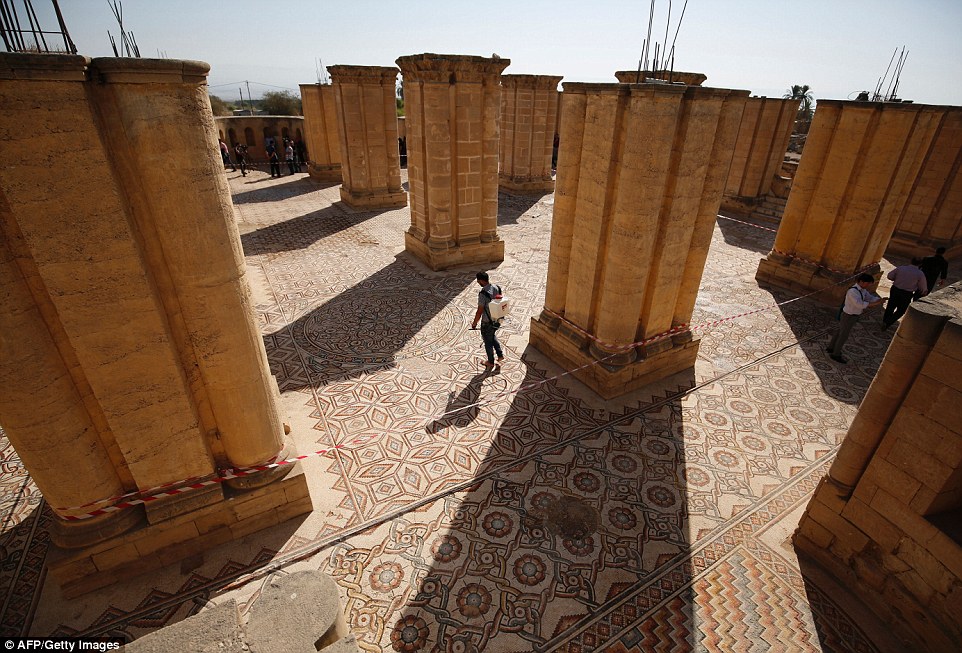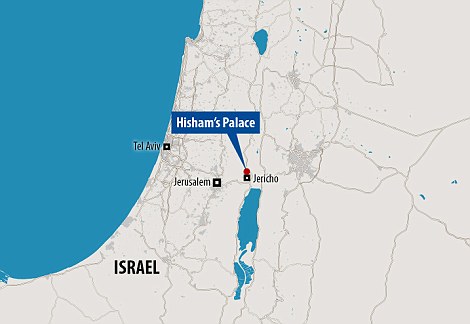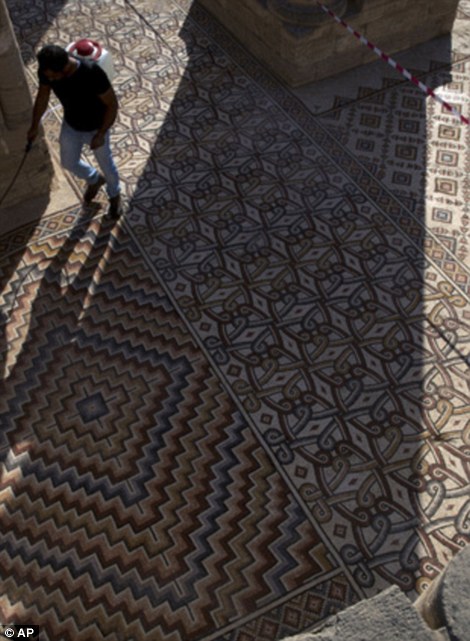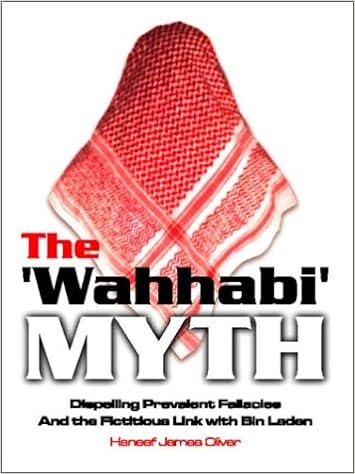THE UNITED STATES SHOULDN’T SELL THE F-35 TO SAUDI ARABIA
SHIMON ARAD
JANUARY 17, 2020
Saudi Arabia
wants to purchase Lockheed Martin’s F-35 stealth fighter jet. The aircraft is the most advanced fighter in the world, and it would give Riyadh a major military advantage in the Gulf. In addition, acquiring the F-35 would deepen its ties with Washington at a crucial moment. Its military campaign in Yemen and the shocking murder of Jamal Khashoggi in October 2018 has dealt major reputational damage to Saudi Arabia in the United States, particularly in Congress. A lucrative defense purchase won’t entirely reverse this trend, but it could be a first step.
The exact status of U.S.-Saudi talks on the possible release of the F-35 is unknown. Little in the way of official disclosure on this issue exists and there are only a small number of clues regarding any ongoing discussion on this issue. In 2017, Defense News
reported that Saudi Arabia was seeking to purchase the F-35, citing unnamed officials who stated that “important progress” was being made. The absence of any official American disclosure regarding the status of such a possible sale should not prevent a discussion of this issue. By the time any formal U.S. response to an official Saudi request becomes public, it could be too late to prevent such a deal from going through.
The stakes of this potential sale are huge, and not just in Riyadh and Washington. Selling Saudi Arabia the F-35 would undercut Israel’s qualitative military edge. Maintaining this advantage is a vital security concern for Israel and a key part of American strategy in the Middle East. What’s more, Riyadh doesn’t need the fifth-generation fighter to deter or defeat Iran in any conceivable conflict. American concerns that Saudi Arabia will turn to Russia or China for advanced fighters are overblown.
Israel’s Qualitative Military Edge and American National Security
Israel’s aerial superiority in the Middle East is central to the retention of its regional qualitative military edge. In light of the considerable build-up by the Arab states of advanced American, European, and Russian fourth-generation fighter jets over the last decade, the continued Israeli exclusivity of the F-35 in the region remains a vital interest.
Its advantage in the air enables Israel to safeguard not only its own national security, but also to maintain American regional interests. This comes at a time when Washington desires to cut its direct involvement in the Middle East. The
reported Israeli air strikes to counter the Iranian military build-up in Syria and Iraq is an obvious example of this. Undermining Israel’s qualitative aerial advantage would undermine its ability to continue to fulfill such a regional role and possibly necessitate an expanded American regional role in the future to safeguard Israel’s security.
It’s Not Too Late to Oppose the F-35 Sale to Saudi Arabia
Talks between Riyadh and Washington about the F-35 are likely still in the pre-decisional stage. This stage is important. Confidential discussions before the submission of a formal foreign military sale request involves crucial “pre-work” conversations. Officials from the State Department and the Department of Defense discuss the possible parameters of such a sale with the potential client, determine its appropriateness, and create internal momentum for a formal decision.
Negotiating major arms deals can be a long, tedious process. Just because Saudi Arabia is interested in purchasing F-35s doesn’t necessarily mean it will happen. At the same time, the fact that talks seem to be taking place reinforces expectations and lays the groundwork for the formal request stage. Subsequently, it becomes harder for public debate or for Congress to block such sales given the bureaucratic momentum and mobilization pushing for the deal to be done, as well as the foreign policy and reputational repercussions of disappointing an expectant major client.
While
Congress has never successfully blocked a proposed major arms sale, it has affected the timing and composition of such sales. By expressing strong opposition to them, it has dissuaded presidents from formally proposing certain arms sales. However, in a standoff between the president and Congress, the former has the definite advantage, unless a two-thirds majority in both houses can be mobilized to override a presidential veto and prevent a sale. The recent use by the administration of President Donald Trump of
emergency authorities to bypass congressional opposition to sell weapons to Saudi Arabia, the United Arab Emirates, and Jordan demonstrates its determination to push through its arms export policies. This may be repeated in the F-35 case.
The fact that an executive decision on the possible release of the F-35 to Saudi Arabia may be determined behind closed doors, before any formal request, need not prevent public debate on the pros and cons of such a deal. Debating the case openly now could play an important role in framing the future of the process.
The Case for Selling F-35s to Saudi Arabia
The release of the fifth-generation F-35 fighter to Saudi Arabia may yield several interrelated benefits for the United States. Strategically, it would signal a strengthening of the American commitment to the security of Saudi Arabia in the wake of the recent unprecedented
attack on its strategic eastern oil processing facilities at Abqaiq and Khurais, probably by Iran. This would bolster existing security ties and cooperation, including the
deployment of additional U.S. troops to Saudi Arabia following the attack.
The underlying message to Iran would be that the United States will defend Saudi Arabia, and it will provide offensive capabilities capable of penetrating the Iranian air defenses, including the
Russian S-300 missile system.
Releasing the F-35 to Saudi Arabia could be seen as a way to reassure Riyadh and other regional partners of America’s continued support to the region. Given the sophistication of the F-35 and the resulting long-term reliance that the Saudis will have on the United States for training, maintenance, logistics, and interoperability, its release to Saudi Arabia would not only be a tool of regional deterrence but could also be used as a tool for restraining the Saudis.
The sale would also be a boost for Trump’s
policy of increasing America’s arms exports. The many billions of dollars that such a deal would be worth could help compensate for the
removal of Turkey from the F-35 program, and contribute to the effort of bringing down the
fighter’s per-unit costs. At the same time, approval of the Saudi request would discourage it from shopping around for alternative sophisticated Russian, Chinese, or European weapon systems.
Regionally, the release of the F-35 to Riyadh could also signify Washington’s appreciation for the Saudi role in
supporting the Trump administration’s “deal of the century” to solve the Israeli-Palestinian conflict. It would encourage the Saudis to retain their crucial and indispensable political backing for the materialization of this effort. This includes support for the June 2019
Bahrain Summit, an economic pledge to bolster the Palestinian economy as part of the deal, and
political pressure on the Palestinian leadership not to outrightly reject the upcoming American proposal.
The Case Against Selling F-35s to Saudi Arabia
There are three major disadvantages to releasing the F-35 to Saudi Arabia. It could raise the potential risk of possible long-term regional
entanglement costs for the United States, undermine Israel’s qualitative military edge, and symbolize U.S. endorsement for Saudi regional and domestic policies.
The Saudi military campaign in Yemen has complicated the U.S.-Saudi military relationship. It has necessitated active intelligence and aerial support, and undermined the premise that the
tens of billions of dollars’ worth of advanced weapon systems sold to Saudi Arabia would rarely be used. They were meant to be “
expensive paperweights” but instead have made the United States complicit in the civilian toll of the war, heightened the dilemma of selling Riyadh weapons while controlling their use, and increased public and congressional opposition to the arms relationship.
The fear is that with the F-35, Crown Prince Mohammad bin Salman will be further emboldened and inadvertently draw the United States in to additional regional brawls, entangling it in conflicts with Iran, Qatar, or some other country. The Saudi campaign in Yemen and the murder of Khashoggi point to bin Salman’s reckless nature. The sale of the F-35s would do no more to rein in Saudi Arabia than has the sale of 154 advanced F-15s in restraining the Saudi-led war in Yemen. Trump’s
emphasis on the economic utility of arms sales in the “buyer’s market” increases Saudi Arabia’s bargaining power and reduces the efficacy of U.S. political and military leverage. Instead of reassuring Riyadh, such a sale may in fact embolden it and increase its self-perception of military prowess.
The actual military utility of this weapon system is far from immediate. It would take years to produce and transfer the Saudi F-35s and for them to reach operational readiness. The advanced F-15SA that the Saudis are in the process of absorbing is already the most advanced fighter jet in the region, excluding Israel’s F-35s, capable of interoperability with American air capabilities and an existing strong indication of Washington’s commitment to Saudi Arabia’s security. In the meantime, such a decision may trigger Iranian provocations prior to the supply of the F-35, because of their fear of the stealth fighter jet, increasing the potential for U.S. entanglement.
The release of the F-35 to the Arab countries will also undermine America’s historical commitment to preserving Israel’s qualitative military edge. Israel’s aerial superiority is key to the
preservation of its qualitative military edge. Given the massive acquisition of advanced fighter planes by the Arab states in recent years, combined with the improvements made in their air defense systems, Israel’s regional F-35 exclusivity remains
the main safeguard for its overall military superiority.
According to U.S.
legislation, guaranteeing Israel’s qualitative military edge means supplying it with superior military means and capabilities, above and beyond the weapon systems supplied by the United States to the Arab countries. Former Secretary of Defense, Robert Gates, refers to this qualitative preference in his
memoirs, writing that among the steps taken “to ensure that Israel’s QME was not diminished by the F-15 sale to Saudi Arabia… we would sell Israel the same model F-35 Joint Strike Fighter we were going to provide our NATO allies.”
Releasing the F-35 to Saudi Arabia would undermine Israel’s aerial advantage and, in the event of a military conflict, could enable the Saudis to penetrate Israel’s airspace. Even if the Saudi version of the F-35 was downgraded, it would still provide game-changing fifth-generation stealth, network-centric, and command and control operational capabilities. This includes interconnectivity between Saudi Arabia’s 5th and 4th generation fighters, making its existing F-15s even more lethal. The only superior aerial capability that could surpass the F-35 is the
F-22, but the United States has thus far
refused to release that capability to any other country.
From a moral perspective, the release of the F-35 to Riyadh at this time in the face of disagreements over the war in Yemen, the isolation of Qatar, human and women’s rights, and the Khashoggi affair, would demonstrate a triumph for geopolitical over normative considerations. This would be a big win for bin Salman, providing him with a significant symbol of enhanced U.S. support at a time of risky Saudi behavior.
Assessing the Pros and Cons
Arms
sales to Saudi Arabia have not bought Saudi restraint in Yemen. Given the focus on arms sales by the Trump administration, Riyadh
may feel that its economic leverage can retain the continued support of the administration for arms sales in the face of Congressional calls to attach political strings to these sales. Releasing the F-35 to Saudi Arabia at this time would present Riyadh with a valued symbolic achievement without reducing the potential for U.S. regional entanglement. Conversely, as Bruce Riedel
writes, “shaking the arms relationship is by far the most important way to clip [Mohammad bin Salman’s] wings.”
In lieu of any other viable alternative, preventing the sale of the F-35 to Arab countries remains the only genuine way of preserving Israel’s qualitative military edge. This applies not only to the release of fifth-generation offensive capabilities to Saudi Arabia, but also to the other
Gulf States. At the same time, Saudi Arabia’s advanced F-15s are more than capable of dealing with Iranian threats and provocations, especially with the United States by its side. These planes far out-perform the aging Iranian F-14s and their
munitions are capable of carrying out precise, standoff attacks against Iranian ground-to-air radars and air-defense systems, as well as destroying Iranian naval defenses and capabilities.
American fears of Saudi Arabia turning to Russia, China, or the Europeans for advanced aerial systems if the F-35 is not released to it, are exaggerated. Purchasing fifth-generation Russian or Chinese fighters would require a massive overhaul of Saudi Arabia’s air force, and these would be stand-alone platforms lacking interconnectivity with its backbone of American and British-made 4th generation fighters. Moreover, Russia or China will not provide the security guarantees that the United States does, at least not at a price that Riyadh will be willing to pay. Turkey’s
removal from the F-35 program because of its purchase of the Russian S-400 may also serve to deter Saudi Arabia from turning to Russia or China in fear of possible U.S. reprisals.
On balance, the cons for releasing the F-35 to Saudi Arabia far outweigh the pros. However, because of the process by which major arms deals proceed behind bureaucratic closed doors, waiting for the formal request stage to discuss the pros and cons may be too late to influence the decision.
Conclusion
Saudi Arabia has more than enough airpower to deter or defeat Iran. In a crisis, it would hardly go it alone against Tehran without American or Israeli participation. With the F-35 in its possession, Riyadh may be tempted to become more emboldened and entangle the United States in its conflicts.
Israel’s exclusive possession of the F-35 in the region remains the main safeguard for its overall military advantage. This is good for both Israel and the United States. In an era in which air power is crucial to Israel’s ability to counter regional threats and to support U.S. policies in the Middle East, this exclusivity needs to be retained for as long as possible. The release of the F-35 to Saudi Arabia or other Gulf states will be a game changer, seriously undermining Israel’s qualitative military edge.
It’s not too late to oppose the F-35 sale to Saudi Arabia. As long as the United States and Saudi Arabia continue to discuss the possible release of the F-35 behind closed doors, opposing such a potential sale can be effective. Israel should make its case to Washington that selling Riyadh F-35s would ultimately undermine Israeli and American interests.
Shimon Arad is a retired colonel of the Israeli Defense Forces and a Ph.D. student at the School of Political Science at the University of Haifa. His writings focus on Middle East regional security topics.
https://warontherocks.com/2020/01/the-united-states-shouldnt-sell-the-f-35-to-saudi-arabia/
Regardless of what the cousin is writing above, I will give it maximum 5 years, before the F-35 will be a part of the already impressive RSAF arsenal.


























